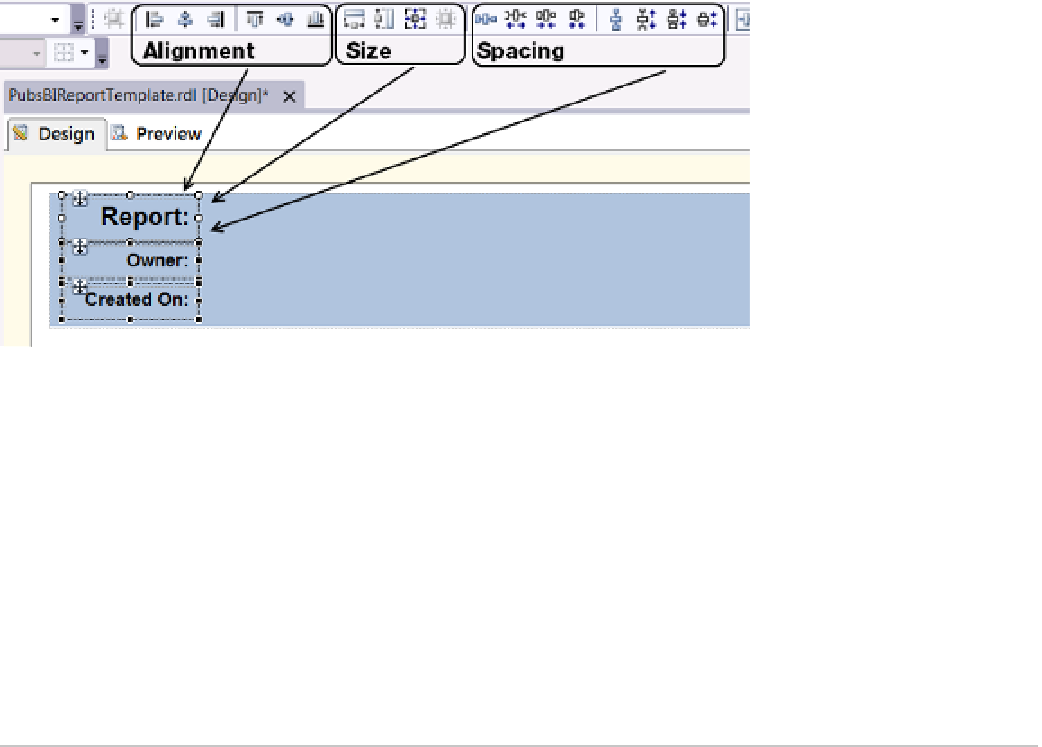Database Reference
In-Depth Information
Once you have selected multiple textboxes, only one will have white sizing handles at the edges and corners
(Figure
17-9
). The textbox with the white sizing handles is considered to be the primary textbox, and any settings
applied to the primary textbox also configure each of the secondary textboxes. Other SSRS Toolbox report items
follow the same pattern.
Figure 17-9.
Using the Layout toolbar to adjust your report items
When a collection of textboxes is selected, their positions can be adjusted using the Layout toolbar (as
shown in Figure
17-9
)
. The toolbar is divided into three basic categories: alignment, size, and spacing. The left-
align option will make all the highlighted textbox borders align on the left, and so on. The size option allows you
to resize the secondary textboxes to the same height and width as the primary textbox. The spacing options set
the spaces between the textboxes.
If you prefer, you can use the context menu for the layout. To display the context menu, right-click the
collection of textboxes (or other report item controls).
To help avoid frustration in setting the layout, Microsoft also allows you to move the report items up, down,
left, and right with your arrow keys on your keyboard. You can use the Ctrl+arrow key combination to move items
in smaller increments.
■
one of the more interesting, and confusing, aspects of textboxes is that they contain two report items. one
item is layered on top of the other. The top layer is called a
placeholder
. we discuss how to handle placeholders later
in this chapter.
Note
Images
Images can help make reports look professional. Images are also used to signify report values in what is referred
to as
dashboard
or
scorecard
reports. he
Image
report item allows you to place an image, from very large to very
small, into your report. It also allows you determine how that image will be stored and retrieved.
One method of storing an image is to embed it within the report's RDL file. Doing so converts the image into
a binary value, which is reassembled when the report is rendered. Images embedded within a single report are
available only for that specific report.
Another option is to store the image within the Reporting Server database. Once again, the image must
be turned into a binary value before it can be stored within a database table, but storing the image in the SSRS
database means that it can be used by many reports.

